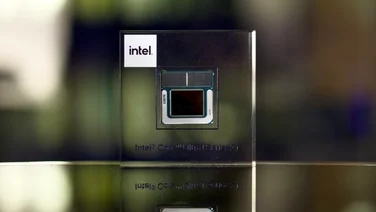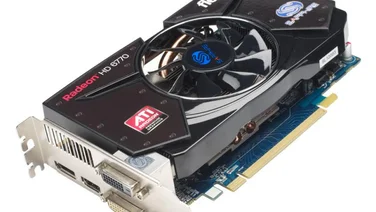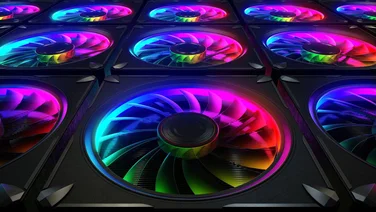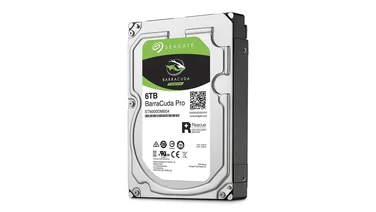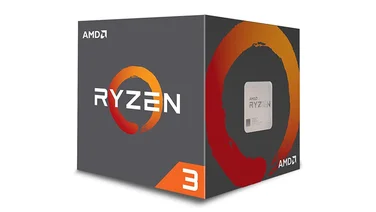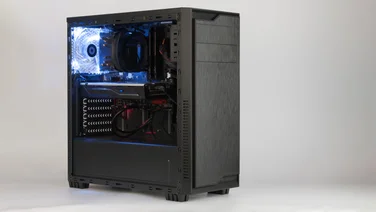To help us provide you with free impartial advice, we may earn a commission if you buy through links on our site. Learn more

- Great ventilation
- Excellent performance at 1440p
- Cheap(ish) way to enjoy DLSS and ray tracing
- Caught between two cracking AMD RX cards
- Still not cheap
Nvidia and AMD’s endless GPU tango continues with the GeForce RTX Super series. These upgraded refreshes of the RTX 2060, 2070 and 2080 are Nvidia’s response to AMD’s excellent Radeon RX 5700 and 5700 XT with the RTX 2060 Super targeting mid-range system builders that might otherwise be tempted by the RX 5700.
Zotac GeForce RTX 2060 Super Mini review: Design and price
This Zotac model we’ve been testing is a beauty. It’s short enough to fit in most microATX and Mini-ITX cases, but still crams in two good-sized open air fans for better cooling. Most of the casing is plastic, but has a convincing matt metal effect, and there’s a strong aluminium backplate covering the circuit board. Besides contributing to a cleaner look, this backplate protects the PCB and makes it easier to wipe away dust.
All of this puts it in good stead next to the RX 5700, which is still mainly available in AMD’s reference design – one that’s a lot longer than the RTX 2060 Super Mini, and has a less appealing blower-style cooler as well. However, if you can make room for it, the Radeon GPU has a gigantic price advantage: you can buy it directly from AMD for just £290, whereas Zotac’s customised card is a full £100 more expensive.
Zotac GeForce RTX 2060 Super Mini review: Performance
At least hardware-wise, the RTX 2060 Super is significantly souped up over the standard RTX 2060. It has 8GB of GDDR6 memory instead of 6GB, bringing it in line with the RX 5700, and has 256 additional CUDA processor cores, bringing the total up to 2,176. Base clock speeds have been raised from 1,365MHz to 1,470MHz, and the RTX 2060 Super also has more RT cores – 34 instead of 30 – for improved performance when enabling ray-traced graphical effects.
The end result is that the RTX 2060 Super Mini has a performance advantage over the RX 5700, but the extent will depend on the game. Dirt: Showdown, for instance, runs so quickly on both cards that our test rig’s CPU became the bottleneck before either of the GPUs did; as such, the RTX 2060 Super Mini produced completely identical scores of 111fps at 1,920×1,080, 111fps (again) at 2,560×1,440 and 97fps at 3,840×2,160.

Metro: Last Light Redux, which is more GPU-dependent, allows Nvidia’s GPU to open up a lead, producing 95fps at 1080p, 57fps at 1440p and 26fps at 4K. This last result might make it look as if 4K is beyond the RTX 2060 Super Mini’s capabilities, but disabling SSAA boosts it to 51fps, which is enough to enjoy. The RX 5700 sits between 3fps and 7fps behind, which isn’t a huge amount but can make for a visible difference below 60fps.
In Tomb Raider, there’s also only a small gap at 4K: the RTX 2060 Super Mini averaged 62fps, the RX 5700 58fps. At lower resolutions, the RTX 2060 Super Mini is the clear winner, with 187fps at 1080p and 129fps at 1440p. The RX 5700 was quick, too, with 168fps and 113fps respectively – we’re not convinced you could even tell the difference at 1080p – but for smooth 1440p, the Nvidia card has it beat.
Both GPUs tied in the SteamVR Performance Test, scoring 11, but the RTX 2060 Super Mini is inarguably the more powerful of the two. Now that a few more games have begun supporting ray-tracing and DLSS, its Nvidia-exclusive feature set is also more attractive than it once was, although don’t expect ray-traced performance to be anywhere near as high as that of the RTX 2070 Super, RTX 2080 Super or RTX 2080 Ti.
These advantages make the £100 premium a lot easier to stomach, unless you’re likely to be playing older or less demanding games that won’t take full advantage of the GPU’s strength. That said, it’s still a lot of cash for what can sometimes be a single-digit advantage, as there’s also the matter of the RX 5700’s big brother, the RX 5700 XT.
At £329 for the reference model, this is still cheaper than Zotac’s GeForce GPU, and while it lacks ray-tracing or DLSS support it does overtake it in core performance. Tomb Raider provides the best example for this: the RX 5700 XT produced 199fps at 1080p, 166fps at 1440p and 67fps at 4K, beating the RTX 2060 Super Mini on all three counts.
Zotac GeForce RTX 2060 Super Mini review: Verdict
Consequently, it’s stuck between the superior value of the RX 5700 and the superior performance of the RX 5700 XT. In terms of a strictly logical purchasing decision, then, either AMD GPU could be the better option.
Yet it would be unfair to leave the RTX 2060 Super Mini out of the running entirely. It’s not cheap, but it’s also a capable 1440p card, and it’s easier to live with in terms of quietness and coolness: with core temperatures ranging from 28°C at idle to 69°C at load, this is a much better-ventilated graphics card than AMD’s reference models. Keep it in mind, especially if you’re planning a more compact PC, or want to try ray-tracing and DLSS.

